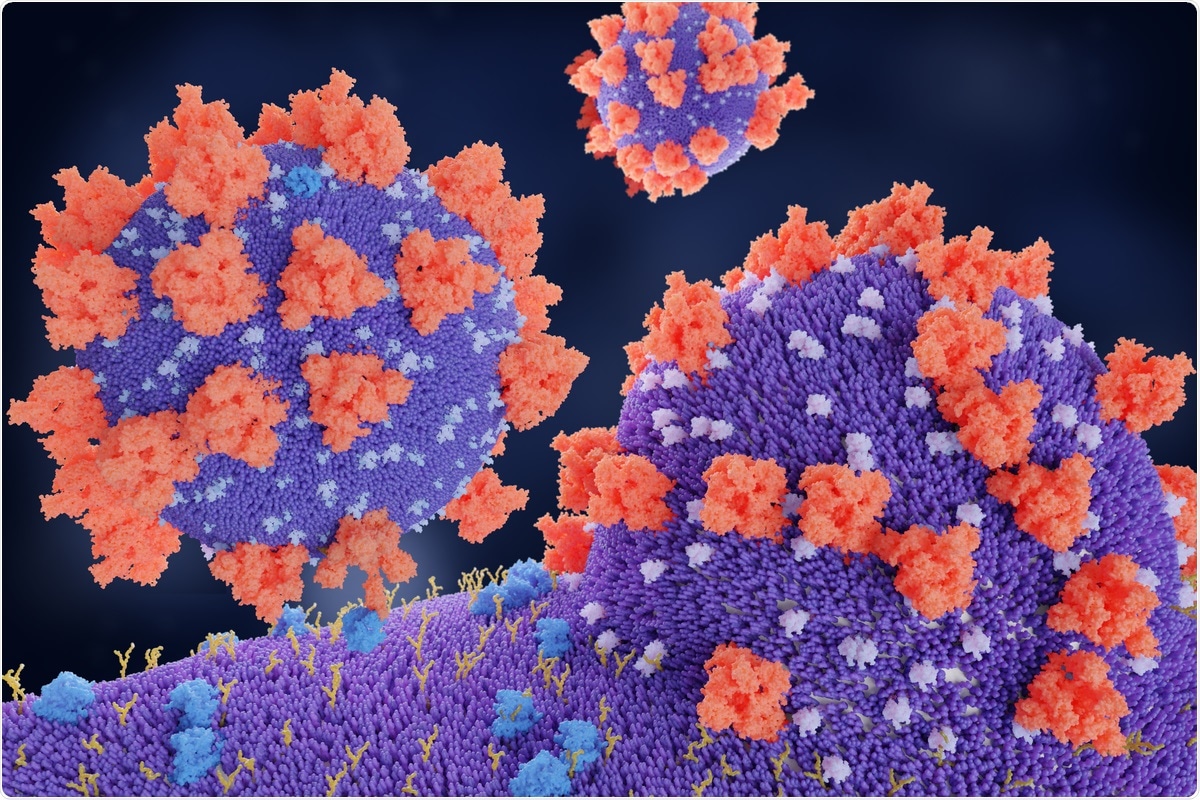Cleavage site recognition by SARS-CoV-2 main protease as new antiviral drug target

The main protease of severe acute respiratory syndrome coronavirus 2 (SARS-CoV-2) cleaves the proteins produced by the virus at various stages of replication and maturation. Highly conserved across coronaviruses due to the essential functional role of the enzyme, it also makes an appealing drug target.
Many research groups have and are investigating main protease inhibitors as antiviral drugs, and in a paper recently uploaded to the bioRxiv* preprint server, a team of researchers examine the crystal structure of the protein while bound to various viral substrate peptides (P1-4). In doing so, they reveal the way in which the bound peptide sequence can direct and modulate enzyme activity, providing new templates towards antiviral drug design.

The SARS-CoV-2 main protease must make eleven cleavages of the non-structural proteins during virus maturation. One in particular being the junction between nsp8/9 at which coronaviruses uniquely bear asparagine residues. When complete in the viral RNA polymerase complex, nsp9 contacts nsp12, and the nsp8/9 junction is involved in a nucleotide monophosphate transfer reaction.
In silico methods were utilized by the group to study the cleavage of nsp8/9 and nsp4/5 by the main protease, finding that the former is around 36 times less efficient. The group then substituted the asparagine residues at the P1 and P2 sites of the nsp8/9 junction with alanine, finding that catalytic activity was doubled. This is likely due to an increased negative charge at the active site raising the energetic barrier of bonding. Adjusting the peptides bound to the main protease during cleavage significantly altered the rate of catalysis and drove small changes to the Michaelis constant, the concentration of substrate at which half-maximal rate is observed.
Modulation of nsp8/9 cleavage
One key difference noted between the nsp8/9, and nsp4/5 cleavage sites is the relative positioning of the scissible bond, with the nsp8/9 P1 primary carbon being 0.4 Å further from the adjacent C=O due to steric effects. The main protease distinguishes between the two sites by sidechain interactions: at the nsp4/5 site, the Asn142 sidechain forms a hydrogen bond with the P1 backbone, while the Gln189 sidechain forms a water bridge with the P2 site; at the nsp8/9 site, Gln189 engages the P3 and P1’ side chains via water molecules.
Several other water molecule interactions were reported by the group to take place around the nsp8/9 binding site, appearing to subtly bend the nsp8/9 substrate fragment away from the active site cleft, causing the observed lesser efficiency.
The side chains adjacent to the nsp8/9 site are bulkier than most other main protease sites, and the terminal Asn residue reaches more deeply into the site than the Ser residue on P1’ of nsp4/5, likely restraining the peptide to a greater degree and also contributing to the reduced catalytic efficiency observed at nsp8/9. Other sub-binding sites are affected similarly by the bulkier sidechains of nsp8/9, with the smaller P4 Ala of nsp4/5 sitting more deeply into the main protease binding site, causing a 1 Å shift in relative primary carbon position.
The catalytic activity at cleavage site nsp5/6 is also modulated in this way, being shifted relative to nsp4/5 due to a large Phe residue at the P2 position, making catalysis less efficient. These findings contribute towards describing the main protease active site plasticity, and how the rate of catalysis at these sites is tuned by evolution. The observed slow cleavage of the nsp8/9 site could be a selected trait that assists in coordinating the assembly of RNA replication machinery. The dual essential role of the nsp8/9 junction of nsp12 binding, while necessitating cleavage by the main protease, has restricted the possible P1-P2 residues at this site, making it a highly conserved target.
*Important Notice
bioRxiv publishes preliminary scientific reports that are not peer-reviewed and, therefore, should not be regarded as conclusive, guide clinical practice/health-related behavior, or treated as established information.
- Patten, J. J. et al. (2021) Recognition of Divergent Viral Substrates by the SARS-CoV-2 Main Protease. doi: https://doi.org/10.1101/2021.04.20.440716, https://www.biorxiv.org/content/10.1101/2021.04.20.440716v1
Posted in: Medical Science News | Medical Research News | Disease/Infection News | Healthcare News
Tags: Alanine, Antiviral Drug, Asparagine, Coronavirus, Coronavirus Disease COVID-19, Drugs, Enzyme, Evolution, Molecule, Nucleotide, Pandemic, Peptides, Polymerase, Protein, Research, Respiratory, RNA, SARS, SARS-CoV-2, Severe Acute Respiratory, Severe Acute Respiratory Syndrome, Syndrome, Virus

Written by
Michael Greenwood
Michael graduated from Manchester Metropolitan University with a B.Sc. in Chemistry in 2014, where he majored in organic, inorganic, physical and analytical chemistry. He is currently completing a Ph.D. on the design and production of gold nanoparticles able to act as multimodal anticancer agents, being both drug delivery platforms and radiation dose enhancers.
Source: Read Full Article



